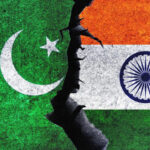Even as India grapples with its next steps at the LAC, it must not lose sight of renewing its compact with the ‘five fingers’
The deadly clashes at Galwan and the ongoing standoff between India and China on the ridges or “fingers” around the Pangong Tso are a metaphor for the wider conflict between the two countries over all the areas that Chinese strategy refers to as the “five fingers of the Tibetan palm”. According to the construct, attributed to Mao and cited in the 1950s by Chinese officials, Xizang (Tibet) was China’s right palm, and it was its responsibility to “liberate” the fingers, defined as Ladakh, Nepal, Sikkim, Bhutan, and the North East Frontier Agency (NEFA, or Arunachal Pradesh). Sixty years ago, India began to set about ensuring that quite the reverse ensued, and all five fingers were more closely attached to India, not China. As the government of India grapples with its next steps at the Line of Actual Control (LAC), it must cast a similarly grand strategy, to renew its compact with each of those areas today.
India’s countermove
In the 1950s, even after India and China signed the Panchsheel agreement in 1954 and before the 1962 China-India war, the Nehru government had begun to worry about some of China’s proclamations. Especially after the flight of the Dalai Lama to India in 1959, China began to demand “self-determination in Kashmir”, wrote former Foreign Secretary T.N. Kaul in his memoirs, detailing how the Chinese press and radio launched a propaganda war against India, while the Chinese government allowed Naga and Mizo dissidents into China for refuge and training. More importantly, school textbooks there began to depict the “five fingers” as a part of China, wrote Mr. Kaul, who was posted in Peking (Beijing) and then as Joint Secretary (East) overseeing the China relationship, in the 1950s. While Prime Minister Nehru’s military miscalculations and India’s defeat in the 1962 war have been studied in great detail, what is perhaps not so well understood is the three-pronged foreign policy New Delhi set into motion at the time, that provided an effective counter to Mao’s five finger policy over the course of the century.
Managing the borders
The first was a push for building border infrastructure and governance. In the mid-1950s the government piloted a project to build the Indian Frontier Administrative Services (IFAS) for overseeing NEFA (Arunachal Pradesh) and other areas along the India-China frontier. The Foreign secretary was the Chair of the IFAS selection board, and many who enlisted in the cadre overlapped between the Indian Foreign Service, the Indian Administrative Service and the Indian Police Service, and rotated between postings in the most remote tribal areas and embassies in the region.
A special desk was created in the Ministry of External Affairs for officers who would tour all the regions from NEFA to Ladakh in order to make suggestions for the rapid development of these areas. While India’s border infrastructure is only now catching up with the infrastructure China built in the course of the next few decades, its base was made during the brief period the IFAS existed, before it was wound up in 1968. An idea before its time, the IFAS’s role has since been transferred to the Indian Army and the Border Roads Organisation, but it is an idea worth revisiting, especially as areas along the frontier continue to complain of neglect and a lack of focus from the Centre (in 2019, the Chief Ministers of Arunachal Pradesh and Mizoram called for the resurrection of the IFAS).
Outreach and treaties
The second prong were a series of treaties that were signed around that time with neighbours such as Nepal and Bhutan, and the consolidation of control, militarily and administratively, of other territories that acceded to India, including Ladakh as a part of Jammu and Kashmir (1947), and NEFA (1951). In 1950, India signed a treaty with Sikkim that made it a “protectorate”, and by 1975 the Indira Gandhi Government had annexed Sikkim and made it the 22nd State of India.
Each of these treaties built unique relationships with New Delhi, tying countries such as Nepal and Bhutan in ways that were seen as a “win-win” for both sides at the time. However, over time, the treaties have outlived their utility, and the benefits of unique ties with Nepal and Bhutan, including open borders and ease of movement, jobs and education for their youth as well as India’s influential support on the world stage, have waned in public memory.
Analysis | China’s Belt and Road Initiative fuels Ladakh standoff
One of the reasons that China has been able to make inroads into Nepal and not with Bhutan, is that the government renegotiated its 1949 Treaty of Perpetual Peace and Friendship between the Government of India and the Government of Bhutan of 1949 with the India-Bhutan Friendship Treaty in 2007, dropping an article that had committed Bhutan “to beguided” by India on its external affairs policy. This has held India and Bhutan ties in good stead thus far, even during the Doklam stand-off between India and China in 2017 in the face of severe pressure from China.
However, despite years of requests from Kathmandu, New Delhi has dragged its feet on reviewing its 1950 Treaty of Peace and Friendship between the Government of India and the Government of Nepal, and on accepting a report the Eminent Persons’ Group (EPG) on Nepal-India relations has produced that recommends a new treaty. New treaties may not, in themselves reduce India’s security threat from China in its neighbourhood, but they create space for a more mutually responsive diplomacy that is necessary to nurture special relationships.
The Tibet issue
For the third prong, India’s policy towards the “palm” or Tibet, itself should be looked at more closely as well. While New Delhi’s decision to shelter the Dalai Lama and lakhs of his followers since 1959 is a policy that is lauded, it does not change the need for New Delhi to look into the future of its relationship, both with the Tibetan refugee community in India, which has lived here in limbo for decades, as well as with its future leadership.
At present, the Dalai Lama has the loyalty of Tibetans worldwide, but in the future, the question over who will take up the political leadership of the community looms large. The Karmapa Lama, who lived in India after his flight from China in 2000, and was groomed as a possible political successor, has now taken the citizenship of another country and lives mostly in the United States. Meanwhile, China will without doubt try to force its own choice on the community as well. Given that it is home to so many Tibetans, India must chart a more prominent role in this discourse.
Analysis | Is China’s ‘peaceful rise’ over?
On J&K
Finally, it is necessary to introspect on how India’s own reorganisation of Jammu and Kashmir in August 2019 has changed the security matrix and threat parameters for India, and its neighbours. While Pakistan’s extreme reaction to the move was expected, China’s reaction was perhaps not studied enough.
Beijing issued a statement decrying the impact on Jammu and Kashmir, and another one specifically on Ladakh, calling it an attempt to “undermine China’s territorial sovereignty by unilaterally changing its domestic law” and warning that the move was “unacceptable and will not come into force”.
Analysis | With China, India will have to be ‘atmanirbhar’
Home Minister Amit Shah’s vow in Parliament, in August last year, to take back Pakistan Occupied Kashmir (PoK) and Aksai Chin was not taken lightly either, as China’s stakes in PoK now go beyond its historical closeness with Pakistan, to its investment in the China-Pakistan Economic Corridor that runs through it. The impact of the new map of Jammu and Kashmir on ties with Nepal as well, is no coincidence. There is proof enough that now more than ever, as the government readies its hand on dealing with China, it must not lose sight of every finger in play.
History, the standoff, and policy worth rereading
Even as India grapples with its next steps at the LAC, it must not lose sight of renewing its compact with the ‘five fingers’
The deadly clashes at Galwan and the ongoing standoff between India and China on the ridges or “fingers” around the Pangong Tso are a metaphor for the wider conflict between the two countries over all the areas that Chinese strategy refers to as the “five fingers of the Tibetan palm”. According to the construct, attributed to Mao and cited in the 1950s by Chinese officials, Xizang (Tibet) was China’s right palm, and it was its responsibility to “liberate” the fingers, defined as Ladakh, Nepal, Sikkim, Bhutan, and the North East Frontier Agency (NEFA, or Arunachal Pradesh). Sixty years ago, India began to set about ensuring that quite the reverse ensued, and all five fingers were more closely attached to India, not China. As the government of India grapples with its next steps at the Line of Actual Control (LAC), it must cast a similarly grand strategy, to renew its compact with each of those areas today.
India’s countermove
In the 1950s, even after India and China signed the Panchsheel agreement in 1954 and before the 1962 China-India war, the Nehru government had begun to worry about some of China’s proclamations. Especially after the flight of the Dalai Lama to India in 1959, China began to demand “self-determination in Kashmir”, wrote former Foreign Secretary T.N. Kaul in his memoirs, detailing how the Chinese press and radio launched a propaganda war against India, while the Chinese government allowed Naga and Mizo dissidents into China for refuge and training. More importantly, school textbooks there began to depict the “five fingers” as a part of China, wrote Mr. Kaul, who was posted in Peking (Beijing) and then as Joint Secretary (East) overseeing the China relationship, in the 1950s. While Prime Minister Nehru’s military miscalculations and India’s defeat in the 1962 war have been studied in great detail, what is perhaps not so well understood is the three-pronged foreign policy New Delhi set into motion at the time, that provided an effective counter to Mao’s five finger policy over the course of the century.
Managing the borders
The first was a push for building border infrastructure and governance. In the mid-1950s the government piloted a project to build the Indian Frontier Administrative Services (IFAS) for overseeing NEFA (Arunachal Pradesh) and other areas along the India-China frontier. The Foreign secretary was the Chair of the IFAS selection board, and many who enlisted in the cadre overlapped between the Indian Foreign Service, the Indian Administrative Service and the Indian Police Service, and rotated between postings in the most remote tribal areas and embassies in the region.
A special desk was created in the Ministry of External Affairs for officers who would tour all the regions from NEFA to Ladakh in order to make suggestions for the rapid development of these areas. While India’s border infrastructure is only now catching up with the infrastructure China built in the course of the next few decades, its base was made during the brief period the IFAS existed, before it was wound up in 1968. An idea before its time, the IFAS’s role has since been transferred to the Indian Army and the Border Roads Organisation, but it is an idea worth revisiting, especially as areas along the frontier continue to complain of neglect and a lack of focus from the Centre (in 2019, the Chief Ministers of Arunachal Pradesh and Mizoram called for the resurrection of the IFAS).
Outreach and treaties
The second prong were a series of treaties that were signed around that time with neighbours such as Nepal and Bhutan, and the consolidation of control, militarily and administratively, of other territories that acceded to India, including Ladakh as a part of Jammu and Kashmir (1947), and NEFA (1951). In 1950, India signed a treaty with Sikkim that made it a “protectorate”, and by 1975 the Indira Gandhi Government had annexed Sikkim and made it the 22nd State of India.
Each of these treaties built unique relationships with New Delhi, tying countries such as Nepal and Bhutan in ways that were seen as a “win-win” for both sides at the time. However, over time, the treaties have outlived their utility, and the benefits of unique ties with Nepal and Bhutan, including open borders and ease of movement, jobs and education for their youth as well as India’s influential support on the world stage, have waned in public memory.
Analysis | China’s Belt and Road Initiative fuels Ladakh standoff
One of the reasons that China has been able to make inroads into Nepal and not with Bhutan, is that the government renegotiated its 1949 Treaty of Perpetual Peace and Friendship between the Government of India and the Government of Bhutan of 1949 with the India-Bhutan Friendship Treaty in 2007, dropping an article that had committed Bhutan “to beguided” by India on its external affairs policy. This has held India and Bhutan ties in good stead thus far, even during the Doklam stand-off between India and China in 2017 in the face of severe pressure from China.
However, despite years of requests from Kathmandu, New Delhi has dragged its feet on reviewing its 1950 Treaty of Peace and Friendship between the Government of India and the Government of Nepal, and on accepting a report the Eminent Persons’ Group (EPG) on Nepal-India relations has produced that recommends a new treaty. New treaties may not, in themselves reduce India’s security threat from China in its neighbourhood, but they create space for a more mutually responsive diplomacy that is necessary to nurture special relationships.
The Tibet issue
For the third prong, India’s policy towards the “palm” or Tibet, itself should be looked at more closely as well. While New Delhi’s decision to shelter the Dalai Lama and lakhs of his followers since 1959 is a policy that is lauded, it does not change the need for New Delhi to look into the future of its relationship, both with the Tibetan refugee community in India, which has lived here in limbo for decades, as well as with its future leadership.
At present, the Dalai Lama has the loyalty of Tibetans worldwide, but in the future, the question over who will take up the political leadership of the community looms large. The Karmapa Lama, who lived in India after his flight from China in 2000, and was groomed as a possible political successor, has now taken the citizenship of another country and lives mostly in the United States. Meanwhile, China will without doubt try to force its own choice on the community as well. Given that it is home to so many Tibetans, India must chart a more prominent role in this discourse.
Analysis | Is China’s ‘peaceful rise’ over?
On J&K
Finally, it is necessary to introspect on how India’s own reorganisation of Jammu and Kashmir in August 2019 has changed the security matrix and threat parameters for India, and its neighbours. While Pakistan’s extreme reaction to the move was expected, China’s reaction was perhaps not studied enough.
Beijing issued a statement decrying the impact on Jammu and Kashmir, and another one specifically on Ladakh, calling it an attempt to “undermine China’s territorial sovereignty by unilaterally changing its domestic law” and warning that the move was “unacceptable and will not come into force”.
Analysis | With China, India will have to be ‘atmanirbhar’
Home Minister Amit Shah’s vow in Parliament, in August last year, to take back Pakistan Occupied Kashmir (PoK) and Aksai Chin was not taken lightly either, as China’s stakes in PoK now go beyond its historical closeness with Pakistan, to its investment in the China-Pakistan Economic Corridor that runs through it. The impact of the new map of Jammu and Kashmir on ties with Nepal as well, is no coincidence. There is proof enough that now more than ever, as the government readies its hand on dealing with China, it must not lose sight of every finger in play.






NO COMMENT